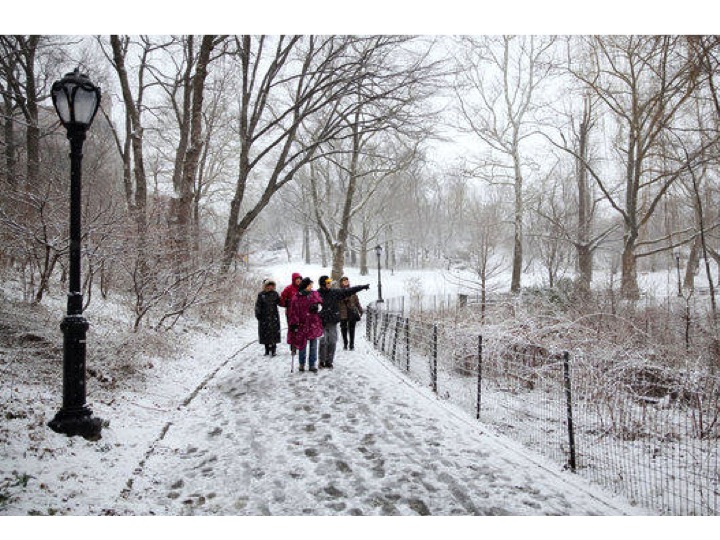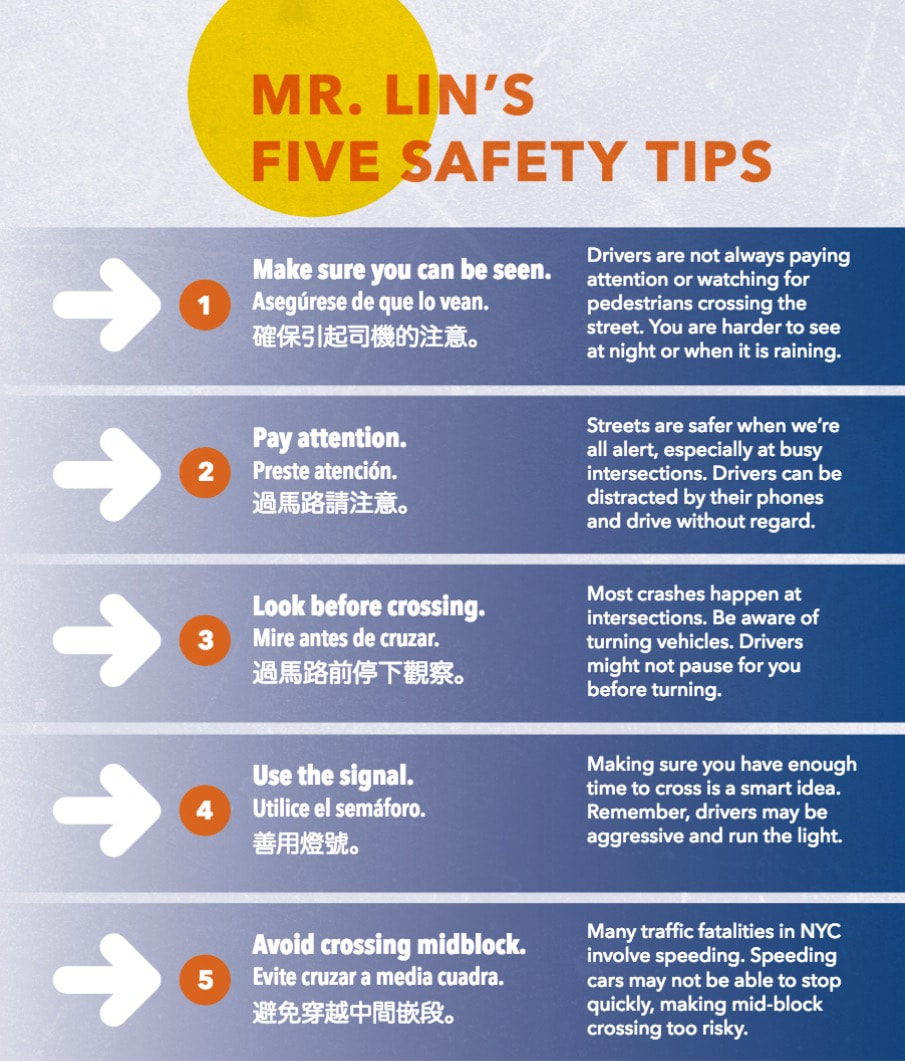|
On December 7, 2018, Columbia's Mailman School of Public Health ran a blog piece on our recent intergenerational discussions about Climate Change. The West Side Spirit featured BAiP's mission to build community on its cover on July 3, 2018 in a piece researched and written by former executive director of Goddard Riverside, Stephan Russo. The Spirit also published an aging in place resource guide recently. On November 2, 2017, our artists' clothesline show held at Hosteling International New York was covered in Our Town. On October 5, 2016, Roosevelt House and Hunter College awarded BAiP the 2016 Joan H. Tisch Community Health Prize "for outstanding accomplishment in the field of public health." In addition to the preceding link, more information is here. On August 16, 2015, BAiP was covered as a model in The Star, a Malaysian newspaper in an article by Loh Foon Fong. To read the article, visit this link or click on the downloadable file below. On May 12, 2015, BAiP was lauded by The West Side Rag for contributing to the livability of the Upper West Side which had recently been cited by AARP as the second most livable neighborhood in the U.S. To read the article, visit this link. On February 15, 2013, The New York Times featured Bloomingdale Aging in Place in an article entitled "Sun City It's Not," about seniors on Manhattan's Upper West Side. To read Constance Rosenblum's piece, click on the downloadable file below or the picture above.
Important note: If you are attending an event in a "looped" room and use a hearing aid with a t-coil, see the instructions below for using an induction loop. Financial assistance may be available to obtain hearing aids. The first step for financial assistance resources for hearing aids is to check with your health care insurance provider to find out if they carry hearing aid coverage. After that, check out the list of resources at the Hearing Loss Association of America to see if you might be eligible for any of the programs listed there. Another NYC resource is the Center for Hearing and Communication. A good recap of what to do when you think you have hearing loss may be found here. Here is a brief list of further resources:
For a few more resources on the topic of hearing and hearing loss, please continue to scroll down. Instructions: How to Use an Induction Loop with Your Hearing Aid Most hearing aids have a t-coil, which is a separate copper microphone from the one you usually use. To use it, all you need to do is turn your hearing aid to the t-coil position. (The t-coil also helps you hear better on the telephone.) If you do not know if you have a t-coil in your hearing aid, ask your audiologist. Often a t-coil is in your aid but not activated; there is no charge to activate the t-coil. If the t-coil is working well, it will pick up the signal from the loop and you will be amazed at how well you can hear. It is best to wait to turn your hearing aid to the t-coil position until the speakers start using their microphones since when you have the t-coil on you cannot hear those around you. When the t-coil is on, you hear only what is coming through the sound source hooked up to the loop. After listening to a presentation with a microphone (or a movie through a TV that is hooked up to the induction loop), be sure to turn your hearing aid/cochlear implant back to the regular microphone setting so you can once again hear the people around you. If you have some hearing loss but do not wear a hearing aid or have a hearing aid but no t-coil, you can access the same wonderful sound by using headphones with an appropriate portable receiver. What Exactly Is an Induction Loop? An induction loop consists of three things: insulated wire, an amplifier and a sound source (e.g. a TV or a microphone). The wire is installed around the perimeter of a room, usually in the ceiling or on the floor. The looped wire is connected to an amplifier (equipment used in stereo systems to make the sound louder) which, in turn, is connected to the sound source, several of which can be hooked up to the loop at once by using a mixer. The system creates a magnetic field within the looped area. The magnetic field signal carries the sound from the loop directly to the t-coil (telephone program or telecoil or t-switch) of a hearing aid/cochlear implant or the special receiver of a headphone set. All background noise is eliminated. It is an amazing technology that has been used in Europe, mostly Great Britain, for 30 years and the U.S. is catching up. More downloadable resources below.
Aging in Place also means navigating New York and its transportation system.
NYC's Department of Transportation has a publication geared to older New Yorkers as part of its Vision Zero initiative. Below are some takeaways to help stay safe. Another transportation resource that is close at hand, it the Columbia University shuttle, free for older adults. For information, routes and schedules, please click here. Many older adults make time for travel. Here we offer resources we've collected on topics such as solo travel, traveling with disabilities, affinity group travel, as well as educational and volunteer-experience travel. Solo Travel In March 2016, the article "Traveling Alone? How to Find a Local Guide" ran in the New York Times.
On February 19, 2015, BAiP presented “Everything You Want to Know about Senior Travel,” a panel featuring Gloria Aponte, volunteer ambassador at Road Scholar, and travelers Bonnie Mairs and Jane Tuttle.
Is "stuff" taking over your life? Is it filling every corner of a friend or family member's space and getting in the way? Are you wondering if there is something of value in your possessions or how to sell things you no longer need? Use the downloadable documents below to guide you in your efforts to organize and winnow your paperwork and possessions and to find the best outlets to sell your things. Learn where to donate or sell furniture, books and clothing. And find a list of auction houses so that you can appraise and sell things of value. And when selling your things, keep in mind some advice: ● Obtain a second opinion for appraisals and auctions. ● Opinions and appraisals cost money, the amount depends on the type of appraisal requested. If the appraiser is going to be legally obligated by the appraisal, it will be more expensive. Appraisals also differ according to the purpose: insurance, estate, retail, etc. Insurance appraisals will usually give a higher value than retail appraisals. ● Supply and demand drive value. ● As a rule, 90% of a collection's value derives from just 20% of the content. ● It’s possible to send photographs of items you'd like to sell to most auction houses to learn if they are interested in listing them. ● Expect varying upfront costs and buyers’ premiums for bringing something to auction and selling it thereafter. Find out what these costs are beforehand. All of these costs should be spelled out in the contract that you sign with the auction house. ● Books are very hard to liquidate. For a book to be considered old by a dealer, think 400 years or more! And for other kinds of objects, age does not always spell value. ● Hallmarks are very important. And so is condition. But beware of refinishing antiques, a process that can negatively affect value. ● Gold or silver in an object is not always indicated. It may have gold or silver content even if that is not clearly labeled; have an expert examine it. ● Signatures on artwork such as paintings, drawings, lithographs and tapestries are not always discernible, but they can often be detected by the expert eye. A signed piece can make all the difference in valuation. ● Antique clocks have value, as do “mid-century modern” items. This information was presented at two BAiP panels. The March 24, 2011, panel "Getting Past the Clutter" featured Rita Golub, a Licensed Clinical Social Worker and Professional Geriatric Care Manager, and Kenny Weinberg, a professional apartment organizer. The March 22, 2012, panel "What's My Stuff Worth," featured George Lowry, Chairman of Swann Auction Galleries, and Michael Capo and Monique Merrill of Capo Auction Fine Art and Antiques.
With child-bearing postponed until later in life and with increased life expectancy, the generation in the middle can find itself tending simultaneously to aging parents and grandparents as well as to rearing children. This is the dilemma of the "Sandwich Generation." A list of resources for adults experiencing "Sandwich" issues may be downloaded below. The information comes from “The Sandwich Generation’s Dilemma,” a panel presented on February 28, 2013, featuring Debra Drelich, LMSW, ACSW, CMC, of New York Elder Care Consultants LLC; Rita Golub, LCWS, CMC, of RMG Associates LLC; Wendy Panken, LCSW; Director of Caregiver Support at the Alzheimer's Association; and Livia Yanowicz, Founder, Complete Elder Care.
Whether still working or completely retired, who doesn't love a wonderful free or low-cost recreation or activity in our fair city? From tips to find free music at Lincoln Center's Rubenstein Atrium or Juilliard School to a list of times when you can enjoy the city's museums completely free of charge, this downloadable document has tips to keep your wallet fat and your brain full of new experiences. This information was presented at our April 18, 2013, panel “New York for a Song: Free and Low-Cost Recreational and Cultural Activities.”
|
Reference Library
Categories
All
|
||||||||||||||||||||||||||||||||||||||||||||||||||||||||||||||||||||||||||||||||||||||||||||||||



 RSS Feed
RSS Feed